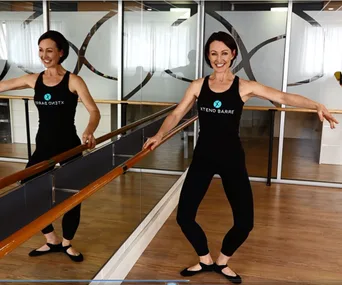Some women call them tiger stripes and wear them proudly like battle scars. But for other women, stretch marks (or to use the medical term, ‘striae’) are an unwelcome reminder of how pregnancy has changed their body.
Whether we like it or not, most women will get stretch marks during pregnancy. But does that mean we have to live with them forever?
Fiona Tuck is a skin and nutritional medicine expert. She says that when it comes to stretch marks, prevention is better than cure.
“Healthy connective tissue requires adequate dietary intake of essential amino acids, vitamin C, zinc and essential fats to support cell membrane integrity. A diet deficient in these nutrients can weaken the integrity of the skin making it more prone to stretch marks,” she says.
So, to prevent stretch marks Tuck recommends eating a diet rich in nutrients, particularly vitamin C, essential fatty acids and zinc. In particular she recommends eating plenty of oily fish (salmon, sardines, mackerel), lean protein (chicken, lentils, eggs, nuts) along with lots of fruit and veg.
Tuck also notes that regular massage with a nourishing skin oil (such as coconut oil) can keep the skin supple.
When it comes to getting rid of stretch marks though, the issue is a little more complex. Tuck notes that stretch marks do fade over time from a deep red to a white scar. But can we get rid of them completely?
Tuck says that it is possible to reduce the appearance of stretch marks through semi-invasive treatments such as dermal rolling and laser treatments.
“Dermal rolling involves a controlled form of wound healing to the skin via small needles or blades. This stimulates an inflammatory wound healing response helping to stimulate new collagen production and minimising the appearance of scars,” she explains.
Tuck says that most women require one to three treatments with an experienced dermal therapist.
Alternatively, Tuck suggests regular self-massage with nourishing skin oil. However she notes that no cream or oil will make stretch marks disappear completely.
So does this mean that stretch marks are just part of motherhood? Tuck thinks so.
“It would be unrealistic to expect the female body to be the same after pregnancy and gratitude for the post pregnancy body and all the joys that come with it is really the best way to come to terms with these new stripy friends,” she says.
Samantha Johnson, a mum of two got severe stretch marks during her first pregnancy. Although she was surprised by how extreme they were, she decided to embrace them.
“I found my post pregnancy body fascinating, especially the ‘squidgyness’ of my belly that had been so ‘full’ of baby. I saw the stretch marks as evidence that my baby had grown there.
“I felt empowered by birth and breastfeeding and saw my body as incredible and strong,” she says.
A few years on, Johnson says that she rarely thinks about her stretch marks.
“They have faded over the years,” she says.
“But they still remind me of the strength of my body in growing and birthing my babies.”
Trending video: Snezana will finish degree before moving in with Sam Wood







